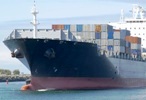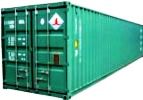| Mubychem Group, established in 1976, is the pioneer manufacturer of Caustic Potash or Potassium Hydroxide Pellets Powder Tablets, Pharmaceutical, Fragrance & Flavor chemicals in India. Mubychem Group has several manufacturing facilities spread across Gujarat and Mumbai India and world wide contacts and toll manufacturers. We are exporting globally to countries like USA, Canada, Europe, UAE, South Africa, Tanzania, Kenya, Egypt, Nigeria, Uganda, Turkey, Mexico, Brazil, Chile, Argentina, Dubai etc. |
The participating units have one or more accreditations like FDA - GMP approval; ISO-9001 Certified; "REACH"registered; ISO-22000; Kosher Certified;Halal Certified; HACCP. We offer Pure & IP BP USP FCC Food Grade ACS AR Analytical Reagent Grades of Chemicals | |







Caustic Potash or Potassium Hydroxide Pellets Powder Tablets Manufacturers, MSDS Sheet
Potassium Hydroxide Pellets Manufacturers USP BP IP ACS FCC
Potassium Hydroxide Pellets
Technical & Pure Tablets, Pellets...
Also IP BP Ph. Eur. USP ACS AR LR FCC Food Grades

Potassium Hydroxide Pellets MSDS Sheet, Material safety Data Sheet
1. Product Identification
Synonyms: Caustic potash; potassium hydrate
CAS No.: 1310-58-3
Molecular Weight: 56.11
Chemical Formula: KOH
2. Composition/Information on Ingredients
Ingredient: Potassium Hydroxide
CAS No.: 1310-58-3
Percent: 85 - 90%
Hazardous: Yes
3. Hazards Identification
Potential Acute Health Effects: Potassium Hydroxide is very hazardous in case of skin contact (corrosive, irritant), of eye contact (irritant, corrosive), of ingestion, of inhalation. The amount of tissue damage depends on length of contact. Eye contact can result in corneal damage or blindness. Skin contact can produce inflammation and blistering. Inhalation of dust will produce irritation to gastro-intestinal or respiratory tract, characterized by burning, sneezing and coughing. Severe over-exposure can produce lung damage, choking, unconsciousness or death. Inflammation of the eye is characterized by redness, watering, and itching. Skin inflammation is characterized by itching, scaling, reddening, or, occasionally, blistering.
Potential Chronic Health Effects:
Carcinogenic Effects: Not available.
Mutagenic Effects: Mutagenic for mammalian somatic cells.
Teratogenic Effects: Not available.
Developmental Toxicity: Not available.
The substance may be toxic to upper respiratory tract, skin,
eyes. Repeated or prolonged exposure to the substance can produce target organs damage. Repeated exposure of the eyes to a low level of dust can produce eye irritation. Repeated skin exposure can produce local skin destruction, or dermatitis. Repeated inhalation of dust can produce varying degree of respiratory irritation or lung damage.
4. First Aid Measures
Inhalation: If inhaled, remove to fresh air. If not breathing, give artificial respiration. If breathing is difficult, give oxygen. Get medical attention immediately.
Ingestion: Do not induce vomiting unless directed to do so by medical personnel. Never give anything by mouth to an unconscious person. If large quantities of this material are swallowed, call a physician immediately. Loosen tight clothing.
Skin Contact: In case of contact, immediately flush skin with plenty of water for at least 15 minutes while removing contaminated clothing and shoes. Wash clothing before reuse. Thoroughly clean shoes before reuse. Get medical attention immediately.
Eye Contact: Immediately flush eyes with plenty of water for at least 15 minutes, lifting lower and upper eyelids occasionally. Get medical attention.
5. Fire Fighting Measures
Fire: Potassium Hydroxide is not combustible, but contact with water or moisture may generate enough heat to ignite combustibles.
Explosion: Potassium Hydroxide can react with chemically reactive metals such as aluminum, zinc, magnesium, copper, etc. to release hydrogen gas which can form explosive mixtures with air.
Fire Extinguishing Media: Use any means suitable for extinguishing surrounding fire.
Special Information: Solution process causes formation of corrosive mists. Hot or molten material can react violently with water. In the event of a fire, wear full protective clothing and NIOSH-approved self-contained breathing apparatus with full face piece operated in the pressure demand or other positive pressure mode.
6. Accidental Release Measures
Small Spill: Use appropriate tools to put the spilled solid in a convenient waste disposal container. If necessary: Neutralize the residue with a dilute solution of acetic acid.
Large Spill: Corrosive solid. Stop leak if without risk. Do not get water inside container. Do not touch spilled material. Use water spray to reduce vapors. Prevent entry into sewers, basements or confined areas; dike if needed. Call for assistance on disposal. Neutralize the residue with a dilute solution of acetic acid.
7. Handling and Storage
Keep Potassium Hydroxide in a tightly closed container, stored in a cool, dry, ventilated area. Protect against physical damage. Isolate from incompatible substances. Protect from moisture. Addition to water releases heat which can result in violent boiling and spattering. Always add slowly and in small amounts. Never use hot water. Containers of this material may be hazardous when empty since they retain product residues (dust, solids); observe all warnings and precautions listed for the product.
8. Exposure Controls/Personal Protection
Airborne Exposure Limits:
- OSHA Permissible Exposure Limit (PEL):
2 mg/m3 Ceiling
- ACGIH Threshold Limit Value (TLV):
2 mg/m3 Ceiling
Ventilation System: A system of local and/or general exhaust is recommended to keep employee exposures below the Airborne Exposure Limits. Local exhaust ventilation is generally preferred because it can control the emissions of the contaminant at its source, preventing dispersion of it into the general work area. Please refer to the ACGIH document, Industrial Ventilation, A Manual of Recommended Practices, most recent edition, for details.
Personal Respirators (NIOSH Approved): If the exposure limit is exceeded and engineering controls are not feasible, a half face piece particulate respirator (NIOSH type N95 or better filters) may be worn for up to ten times the exposure limit or the maximum use concentration specified by the appropriate regulatory agency or respirator supplier, whichever is lowest.. A full-face piece particulate respirator (NIOSH type N100 filters) may be worn up to 50 times the exposure limit, or the maximum use concentration specified by the appropriate regulatory agency, or respirator supplier, whichever is lowest. If oil particles (e.g. lubricants, cutting fluids, glycerin, etc.) are present, use a NIOSH type R or P filter. For emergencies or instances where the exposure levels are not known, use a full-face piece positive-pressure, air-supplied respirator. WARNING: Air-purifying respirators do not protect workers in oxygen-deficient atmospheres.
Skin Protection: Rubber or neoprene gloves and additional protection including impervious boots, apron, or coveralls, as needed in areas of unusual exposure.
Eye Protection: Use chemical safety goggles and/or a full face shield where splashing is possible. Maintain eye wash fountain and quick-drench facilities in work area.
9. Physical and Chemical Properties
Appearance: Potassium Hydroxide is white deliquescent solid
Odor: Odorless.
Solubility: 52.8% in water @ 20C (68F)
Specific Gravity: 2.04
pH: 13.5 (0.1 molar solution)
% Volatiles by volume @ 21C (70F): 0
Boiling Point: 1320C (2408F)
Melting Point: 360C (680F)
Vapor Density (Air=1): No information found.
Vapor Pressure (mm Hg): 1.0 @ 714C (1317F)
Evaporation Rate (BuAc=1): No information found.
10. Stability and Reactivity
Stability: Potassium Hydroxide is stable under ordinary conditions of use and storage.
Hazardous Decomposition Products: Carbon monoxide when reacting with carbohydrates, and hydrogen gas when reacting with aluminum, zinc and tin. Thermal oxidation can produce toxic fumes of potassium oxide (K2O).
Hazardous Polymerization: Will not occur.
Incompatibilities: Contact with water, acids, flammable liquids and organic halogen compounds, especially trichloroethylene, may cause fire or explosion. Contact with nitro methane and other similar nitro compounds cause formation of shock sensitive salts. Contact with metals such as aluminum, tin and zinc causes formation of flammable hydrogen gas.
Conditions to Avoid: Heat, moisture, incompatibles.
11. Toxicological Information
For potassium hydroxide: Oral rat LD50: 273 mg/kg; Investigated as a mutagen. Skin Irritation Data (std Draize, 50 mg/24 H): Human, Severe; Rabbit, Severe. Eye Irritation Data (Rabbit, non-std test,1 mg/24 H, rinse): Moderate.
--------\Cancer Lists\ ---------------------------------------
---------------------------------- ---NTP Carcinogen---
Ingredient ----------------------- Known -- Anticipated -- IARC Category
---------------------------------- ----- ----------- -
Potassium Hydroxide (1310-58-3) -- No ----- No ----------- None
Water (7732-18-5) ---------------- No ----- No
----------- None
12. Ecological Information
Environmental Fate: No information found.
Environmental Toxicity: Potassium Hydroxide: TLm: 80 ppm/Mosquito fish/ 24 hr./
Fresh water.
13. Disposal Considerations
Whatever cannot be saved for recovery or recycling should be handled as hazardous waste and sent to a RCRA approved waste facility. Processing, use or contamination of this product may change the waste management options. State and local disposal regulations may differ from federal disposal regulations. Dispose of container and unused contents in accordance with federal, state and local requirements.
14. Transport Information
Domestic (Land, D.O.T.)
Proper Shipping Name: POTASSIUM HYDROXIDE, SOLID
Hazard Class: 8
UN/NA: UN1813
Packing Group: II
International (Water, I.M.O.)
Proper Shipping Name: POTASSIUM HYDROXIDE, SOLID
Hazard Class: 8
UN/NA: UN1813
Packing Group: II
International (Air, I.C.A.O.)
Proper Shipping Name: POTASSIUM HYDROXIDE, SOLID
Hazard Class: 8
UN/NA: UN1813
Packing Group: II
15. Regulatory Information
--------\Chemical Inventory Status - Part 1\----------------------- Ingredient -------------------- TSCA EC Japan Australia ------------------------------- ---- --- ----- --------- Potassium Hydroxide (1310-58-3) Yes Yes Yes Yes Water (7732-18-5) ------------- Yes Yes Yes Yes --------\Chemical Inventory Status - Part 2\----------------------- -------------------------------------- --Canada-- Ingredient -------------------- Korea DSL NDSL Phil. ------------------------------- ----- --- ---- ----- Potassium Hydroxide (1310-58-3) Yes Yes No Yes Water (7732-18-5) ------------- Yes Yes No Yes --------\USA Federal, State & International Regulations - Part 1\--- ------------------------------- -SARA 302- ------SARA 313------ Ingredient -------------------- RQ TPQ List Chemical Catg. ------------------------------- --- --- ---- -------------- Potassium Hydroxide (1310-58-3) No No No No Water (7732-18-5) ------------- No No No No --------\USA Federal, State & International Regulations - Part 2\--- --------------------------------------- -RCRA- -TSCA- Ingredient -------------------- CERCLA 261.33 8(d) ------------------------------- ------ ------ ------ Potassium Hydroxide (1310-58-3) 1000 No No Water (7732-18-5) No No No
Chemical Weapons Convention: No; TSCA 12(b): No; CDTA: No
SARA 311/312: Acute: Yes; Chronic: Yes; Fire: No; Pressure: No
Reactivity: Yes (Mixture / Solid)
Australian Hazchem Code: 2R
Poison Schedule: S6
USA Federal and State Regulations:
New York release reporting list: Potassium hydroxide Pennsylvania RTK:
Potassium hydroxide Florida: Potassium hydroxide Minnesota: Potassium hydroxide Massachusetts RTK: Potassium hydroxide New Jersey: Potassium hydroxide California
Director's List of Hazardous Substances: Potassium hydroxide TSCA 8(b) inventory: Potassium hydroxide CERCLA:
OSHA: Hazardous by definition of Hazard Communication Standard (29 CFR 1910.1200). EINECS: This product is on the European Inventory of Existing Commercial Chemical Substances.
WHMIS (Canada): CLASS D-1B: Material causing immediate and serious toxic effects (TOXIC). CLASS E: Corrosive solid.
DSCL (EEC):
HMIS (U.S.A.):
Health Hazard: 3
Fire Hazard: 0
Reactivity: 2
Personal Protection: J
National Fire Protection Association (USA.):
Health: 3
Flammability: 0
Reactivity: 1
Specific hazard:
Protective Equipment:
Gloves. Synthetic apron. Vapor and dust respirator. Be sure to use an approved/certified respirator or equivalent. Wear appropriate respirator when ventilation is inadequate. Splash goggles.
16. Other Information
Disclaimer:
******************************
Our company provides this Potassium Hydroxide MSDS information sheet contained herein in good faith but makes no representation as to its comprehensiveness or accuracy. This Potassium Hydroxide MSDS sheet is intended only as a guide to the appropriate precautionary handling of the material by a properly trained person using this product. Individuals receiving the information must exercise their independent judgment in determining its appropriateness for a particular purpose.
******************************
Potassium Hydroxide Pellets Manufacturers:
MUBYCHEM GROUP
CHINCHBUNDER, MUMBAI 400009, INDIA
TEL: (OFFICE) 91-22-23774610, 91-22- 23723564. 91-22-23728264
e-mail: anmol@pcmenergy.com

Copyright and Usual Disclaimer is Applicable.
Global or International Potassium Hydroxide Pellets Suppliers, Exporters, Importers, Manufacturers
If I give you “My Word” Nobody can undo it.
If I sign an “Agreement” my Lawyer will undo it
Perfection is made up of small thing but it is not small.
